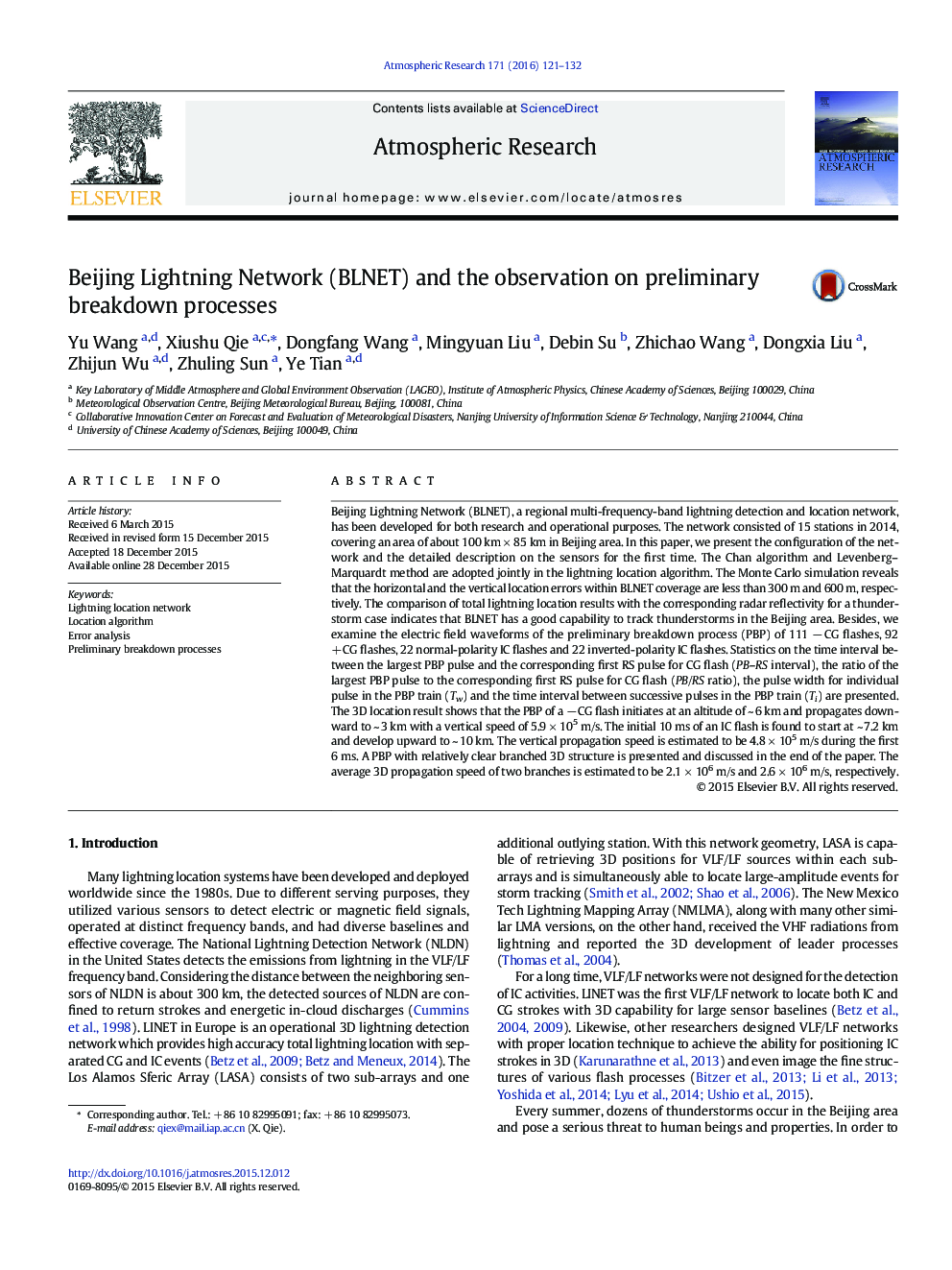| کد مقاله | کد نشریه | سال انتشار | مقاله انگلیسی | نسخه تمام متن |
|---|---|---|---|---|
| 4449607 | 1620506 | 2016 | 12 صفحه PDF | دانلود رایگان |

• BLENT, a regional multiple-frequency-band lightning detection and location network is installed in Beijing area.
• Comparisons of location results with radar echoes and a tower-initiated flash indicate good performances of BLNET in thunderstorm tracking.
• Initiation altitude and 3D propagation speed for a -CG flash and an IC flash are determined. Branched propagation manner is observed for PBP in -CG.
Beijing Lightning Network (BLNET), a regional multi-frequency-band lightning detection and location network, has been developed for both research and operational purposes. The network consisted of 15 stations in 2014, covering an area of about 100 km × 85 km in Beijing area. In this paper, we present the configuration of the network and the detailed description on the sensors for the first time. The Chan algorithm and Levenberg–Marquardt method are adopted jointly in the lightning location algorithm. The Monte Carlo simulation reveals that the horizontal and the vertical location errors within BLNET coverage are less than 300 m and 600 m, respectively. The comparison of total lightning location results with the corresponding radar reflectivity for a thunderstorm case indicates that BLNET has a good capability to track thunderstorms in the Beijing area. Besides, we examine the electric field waveforms of the preliminary breakdown process (PBP) of 111 − CG flashes, 92 + CG flashes, 22 normal-polarity IC flashes and 22 inverted-polarity IC flashes. Statistics on the time interval between the largest PBP pulse and the corresponding first RS pulse for CG flash (PB–RS interval), the ratio of the largest PBP pulse to the corresponding first RS pulse for CG flash (PB/RS ratio), the pulse width for individual pulse in the PBP train (Tw) and the time interval between successive pulses in the PBP train (Ti) are presented. The 3D location result shows that the PBP of a − CG flash initiates at an altitude of ~ 6 km and propagates downward to ~ 3 km with a vertical speed of 5.9 × 105 m/s. The initial 10 ms of an IC flash is found to start at ~ 7.2 km and develop upward to ~ 10 km. The vertical propagation speed is estimated to be 4.8 × 105 m/s during the first 6 ms. A PBP with relatively clear branched 3D structure is presented and discussed in the end of the paper. The average 3D propagation speed of two branches is estimated to be 2.1 × 106 m/s and 2.6 × 106 m/s, respectively.
Journal: Atmospheric Research - Volume 171, 1 May 2016, Pages 121–132